Sound
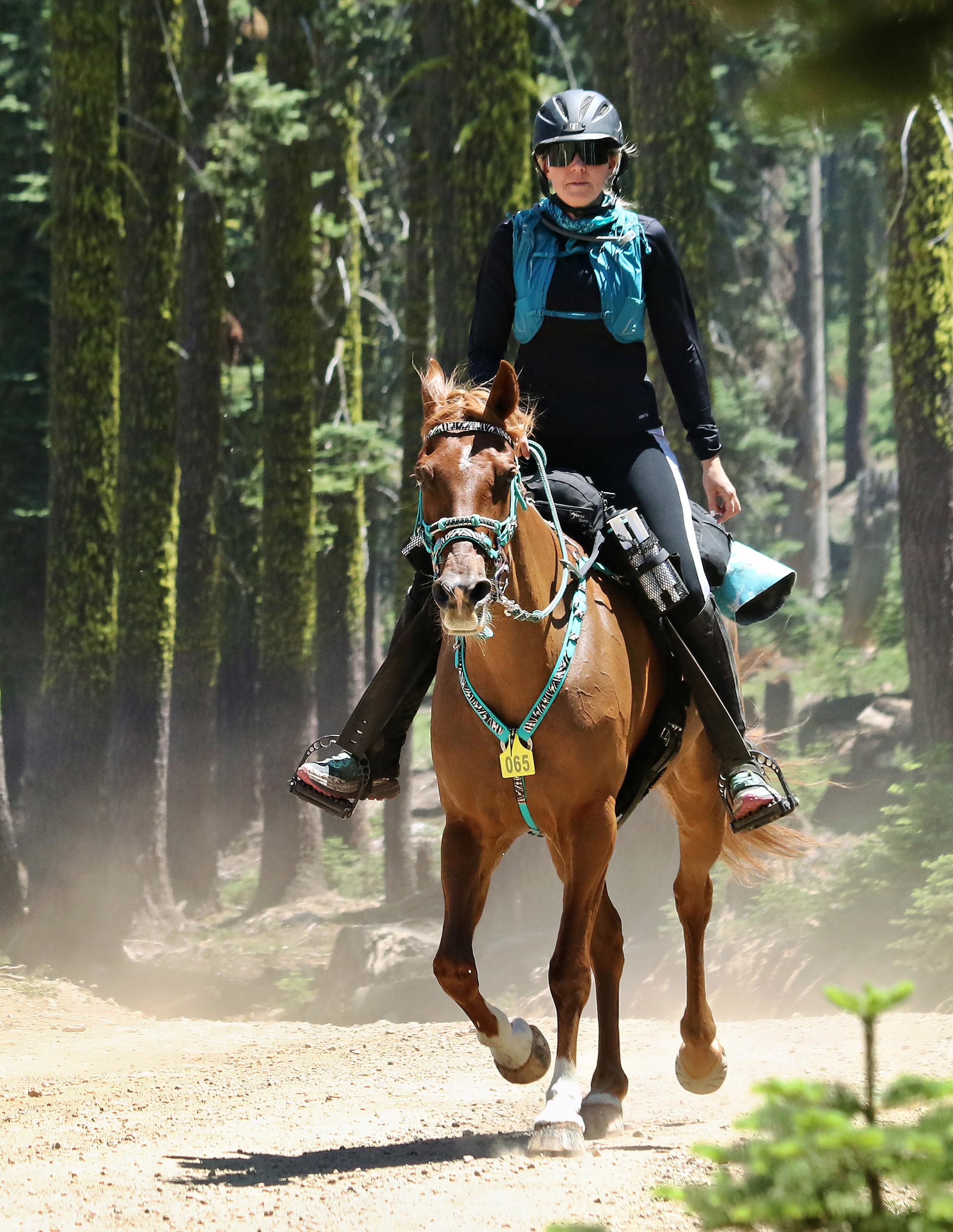
A Champion for All Gaited Horses
Volume 8, Issue 3, 2025
Sound Advocate
Friends of Sound Horses, Inc. 6614 Clayton Rd. #105 St. Louis, MO 63117 info@fosh.info * www.fosh.info
Board of Directors
President - Teresa Bippen Missouri Tbippen1957@yahoo.com
Secretary/Treasurer-Gina Vehige Director at Large-Bill Coon VP IJA Program-Dianne Little Missouri Utah Alberta, Canada gvehige115@gmail.com wbotis@gmail.com ddlittle@telus.net
VP Programs/Gaited Sport Horse Director at Large-Anita Dunham VP HIO/DQP-Lisa Harris Dianne Little Missouri Tennessee Alberta, Canada dunhamanita@gmail.com ddlittle@telus.net
Executive Advisory Committee
Keith Dane Patti Potts Pauline Stotsenberg Hawaii Missouri California pottspa@gmail.com ps@yesteryearfarms.net
Editor Stephanie J. Ruff Florida editor@fosh.info
FOSH Mission Statement
To promote all “sound,” naturally gaited horses, with a specific emphasis on Tennessee Walking Horses. (In this context, sound means not “sored”.)
Importance is placed on education in regards to the humane care for the emotional, mental and physical wellbeing, training, and treatment of all gaited horses.
FOSH will only support flat shod or barefoot horses and will never endorse any event that uses stacks and/or chains as action devices, or any mechanical, chemical, or artificial means to modify the natural gaits of the horse.
To these ends, FOSH focuses on three areas for gaited horses:
1) educating people about sound horse training principles; 2) supporting sound shows, events and activities; 3) working to end soring.
FOSH is a 501(c) (3) non-profit organization. All donations are tax deductible to the extent permitted by law. Your donation to support the FOSH mission is needed to advance the goals set forth by FOSH in conjunction with its formal mission statement.
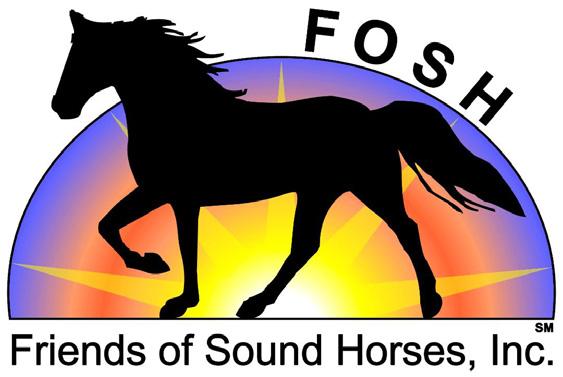
Publication Guidelines
The Sound Advocate is a digital magazine published quarterly by Friends of Sound Horses, Inc. Reproduction of any article is prohibited without the express written permission of FOSH.
FOSH accepts unsolicited submissions, but reserves the right to edit any and all submissions for content, style and space constraints. FOSH further reserves the right to refuse advertising for any reason.
At no time shall the publisher’s liability exceed the total cost of the revenue from advertising in the issue involved in any dispute.
All show suspensions and show results are printed as they are received from the reporting agencies. FOSH does not guarantee their accuracy.
FOSH does not endorse the content of any advertisement in this publication, nor does it warrant the accuracy of any advertisement.
Readers are urged and cautioned to use due diligence and to thoroughly research, including asking for references, before following through with any transaction.
FOSH does not endorse any trainer, educator, clinician, style of natural training, tack, or horse equipment to the exclusion or preference of any other. Each horse is an individual and may respond differently to particular methods.
Articles published by FOSH reflect the views and opinions of the writers and do not reflect, necessarily, those of FOSH.
Publication Information
Subscribers: The Sound Advocate is a benefit of membership. To ensure that you receive your issues, be sure that your e-mail address is current. To change an e-mail address, contact gvehige115@ gmail.com.
Submission of Articles, Calendar Dates, News and Photos: Send to tbippen1957@yahoo.com. Photos may not be embedded in text and must be submitted as jpeg format, minimum of 300 dpi. The deadline for each issue is the 15th of the preceding month when the issue is to be released. Submissions will not be accepted after the deadline, but may be carried over to another issue. Submissions will not be returned to the submitter.
Member’s Advertising Rates
Back Cover $300
Inside Front Cover $275
Inside Back Cover $275
Full page $125
Half page $75
Quarter page $60
Business Card $25
Directory $25
Discounts for Multiple Issues
2 issues - 10% off total fee
4 issues - 20% off total fee
6 issues - 30% off total fee
Ads will be accepted in pdf, tif or jpeg formats. Text and photos must be e-mailed separately by the 10th of the month when the issue is released. Photos must be 300 dpi. Camera-ready ads are emailed at 300 dpi. Materials should be emailed to editor@ fosh.info.
All advertisements must be paid in advance by check, money order, or credit card. Payments should be made out to FOSH and mailed to:
6614 Clayton Rd. #105 St. Louis, MO 63117
More FOSH information can be found online. Find us at www.fosh.info.
Like us on Facebook.

On the cover: Leahe Daby and SFF’s Aces Queen of Heart’s (aka Lucy) on the trail at this year’s Tevis Cup. Photo credit: Merri Melde
TABLE OF CONTENTS
From the President...
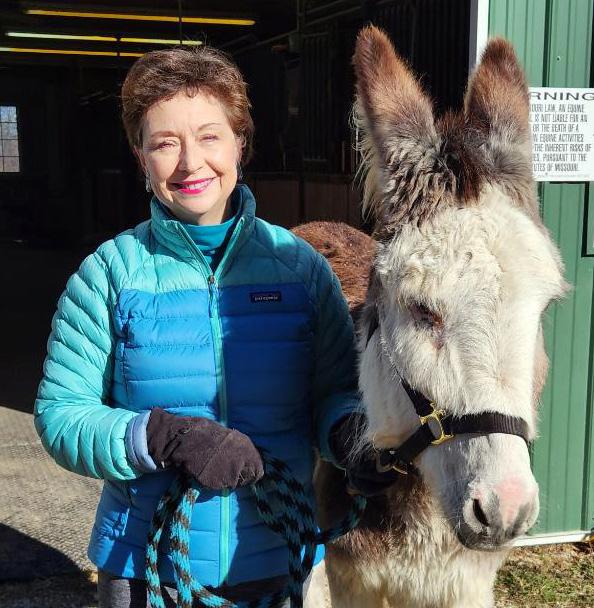
Dear FOSH Friends and Supporters,
I hope you enjoy reading this issue as much as I did! How nice it is to live vicariously through the words of a long-distance rider who completed the Tevis ride on a Rocky Mountain Horse. Distance riding has been on my wish list for many years; however, I confess it is slowly dropping lower on the list due to some factors—mostly my age and that of Shiloh, my drama queen (king?) Missouri Fox Trotting gelding. Shiloh turned 25 last month. In addition to our ages, my tolerance for non ideal weather conditions is eroding as well. Cleaning stalls and feeding horses during cold, rainy weather I can shrug off but riding when it is too hot, humid, windy, cold or wet just doesn’t feel right.
Not all riding is outside, of course, especially for those lucky enough to attend the FOSH-sponsored gaited horse
clinic featuring Carl and Tammy Bledsoe held in Lake St. Louis, Missouri. Participants learned so much and enjoyed being with Carl and Tammy who are some of the nicest people you could meet. They have been huge supporters of the sound horse movement and of FOSH for many years including representing FOSH at equine festivals. They can answer any question and teach the principles of sound horsemanship. They kindly and generously share their knowledge and patience for students and horses alike in their clinics. You can read all about the clinic in this issue—it’s hot off the press. I hope you plan on attending a clinic in 2026.
I’m unsure of how many are you are following the battle against soring and the big lick; however, it is unfortunate that 2025 has proven to be a year of setbacks for sound horse warriors with new regulations pulled and the USDA not following through on enforcement. Many horses suffered needlessly again this season for a blue ribbon to satisfy a rider’s ego. To this day, I’m mystified how the shows continue to draw crowds with so much information available on the travesty of the big lick horse. We’re staying involved with the other humane animal groups to keep the message alive. Chris Hayes provides an update in this issue.
From the Editor...

Hello FOSH Friends.
Our cover and feature article in this issue is Leahe Daby and her Rocky Mountain mare SFF’s Aces Queen of Heart’s (“Lucy”). They finished 18th at this year’s Tevis Cup.
In my many years in the Arabian industry, I’ve been familiar with a lot of the horses and riders in endurance, including Tevis. As we all know Arabians are dominant in endurance, but it’s great to see gaited horses take on the tough, prestigious Tevis Cup. It’s even more exciting to see them excel. I look forward to seeing Leahe and Lucy continue their endurance career.
Also in this issue is a first-hand account of a Carl Bledsoe clinic in Missouri from FOSH’s own Gina Vehige. Carl is building his brand and making quite a name for himself not just in the flat-shod gaited industry, but among other breeds and riding styles as well. We are fortunate that he’s bringing his knowledge and style of instruction to the gaited horse industry.
Finally, when we look at life outside the horse industry, there’s no denying it is a difficult place right now. I’m certainly not going to get into a political discussion, but we all know that every day is stressful.
I’m reminded of September 11, 2001 when I lived on my farm in Maryland. My sister lived in New York, and all the phones were down so I couldn’t reach her. My parents were scheduled to fly from California back to Pennsylvania. It was evening before we found out that their plane never took off and that they were safe.
But I had horses, goats, cats and a dog. It didn’t matter that chaos was happening around the country. The animals needed to be cared for. In times of uncertainty, having our animals brings a little calm to our part of the world because of the routine they require. It grounds us and requires us to keep going even if we don’t want to. So find comfort in your animals when there are so many other unknowns.

Advocacy In Action: Building Partnerships
to Protect Gaited Horses
Chris Heyde, Blue Marble Strategy
Stephanie
Stephanie J. Ruff Editor, editor@fosh.info
Gaited horses are celebrated for their smooth, flowing gaits, which warrant more than just applause; they deserve our advocacy and protection.
Unfortunately, despite a federal law against the practice of soring, horses continue to be subjected to this abusive practice. Soring, a cruel and illegal method that intentionally inflicts pain on a horse’s legs or hooves to force an exaggerated high-stepping gait, especially in the Tennessee Walking Horse Show industry for decades.
For decades, advocacy groups like Friends of Sound Horses (FOSH) have promoted humane treatment, strongly opposing practices that cause harm and providing education and resources to help owners,
trainers and judges celebrate natural gaits. I have had the pleasure of knowing and supporting the work of FOSH for almost 30 years now, and it is an honor to help them advocate for stronger protections against soring.
FOSH is the only international organization dedicated exclusively to promoting the emotional, mental, and physical well-being of these majestic breeds. Across the United States and Canada, FOSH educates, supports, and protects gaited horse enthusiasts whose needs are often overlooked by mainstream equestrian communities—it’s about building communities committed to celebrating natural gaits and humane care.
FOSH is proud to partner with organizations from across disciplines,
professions, and the welfare community to create educational programs, share best practices, and promote safe and fair competition standards.
A primary focus has been on strengthening collaboration with the U.S. Department of Agriculture (USDA). As the federal agency responsible for enforcing the Horse Protection Act (HPA), the USDA plays a vital role in safeguarding horses from abusive practices like soring. FOSH and other horse welfare organizations participate in annual meetings with the USDA to share our concerns and advocate for full enforcement of the HPA.
FOSH coalition partners are helping to strengthen this effort by working together, mobilizing veterinary networks, engaging horse owners and producing data-driven reports that assist the USDA in better understanding where gaps exist and which tools are the most effective in closing them.
These collaborations extend beyond Washington; they span the entire country. Trainers, riders, and everyday horse owners are contributing every day by advocating for humane practices and supporting strong protections. By uniting local voices with national leadership, we can forge a better path forward.
While the path ahead may not be simple, changing deeply rooted systems requires time and persistence. With allies by our side and constructive dialogue with the USDA ongoing, we are confident that progress is within reach.
Every meeting, shared research, and partnership we build brings us closer to our ultimate goal of ensuring every horse can live free from cruelty.
That’s at the core of Advocacy in Action—working together, building momentum, and never losing sight of the horses who depend on us.
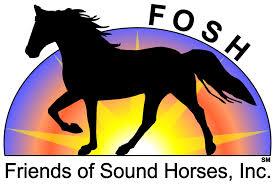
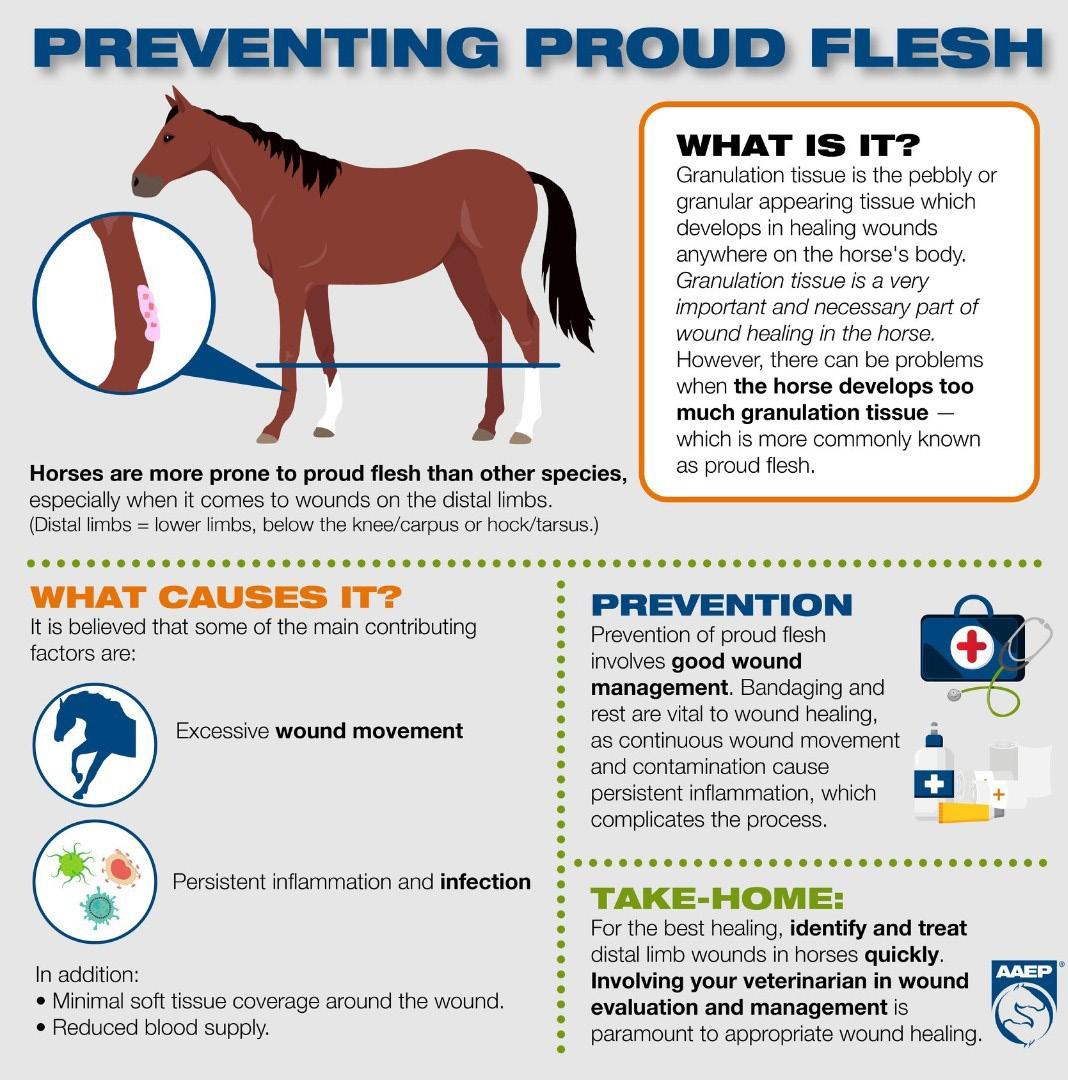
Leahe Daby and her Rocky Mountain Horse Conquer the Tevis Cup
It’s a long jump from executing a piaffe on a 17-hand warmblood in the dressage ring to climbing the steep, craggy Cougar Rock aboard a 15.1hand gaited Rocky Mountain horse in the 100-mile Tevis Cup endurance ride, but Leahe Daby is exceedingly accomplished in both disciplines.
“I used to ride dressage on non-gaited warmbloods,” says Daby. “When I was a young rider you had to qualify to be on the young rider team, and you competed in FEI competitions. It was a blast! My Hanoverian, Hugo, and I got a silver medal at the Junior Olympics.”
Now 42, Daby says that feels like a lifetime ago, and presently she’s perfectly happy and comfortable in the endurance saddle, riding hot and dusty trails for the past decade.
What one might call a 180-degree turn in the horse competition world came about after she had to put her dressage horse down.
“A friend I met through my son’s Little League had Peruvian horses, and she said, ‘Come ride with me.’ So, I went and rode with her, and I ended up getting a little Peruvian of my own named Oso. I rode him for two or three years, and then I discovered endurance, and I wanted to do that

sport.” But Oso wasn’t really suited for rides longer than limited distance rides of 25-30 miles, and Daby yearned to tackle the longer distances of 50 miles and up.
Enter Dean Moon, an acquaintance from nearby Cool, California, known for riding Rocky Mountain horses in endurance. Daby began riding
endurance on Moon’s Jackson Blue, a gaited gelding not only suited for 50mile endurance rides, but for the holy grail of endurance rides, the 100-mile Tevis Cup that takes place every July or August during the full moon.
The Tevis Cup starts above Lake Tahoe in California, traverses the Sierra Nevada mountains, crosses
the Granite Chief wilderness and the Tahoe National Forest, and finishes in Auburn, within a time limit of 24 hours. The duo tackled the Tevis Cup in 2018 and finished in 21st place out of 149 starters.
After that, it was not surprising that Daby got her own Rocky Mountain endurance horse, SFF’s Aces Queen of Heart’s (“Lucy”).
“A lady named Pamela Higgins got her from Kentucky and brought her to Pilot Hill, California, near where I live. She sent the mare to a trainer named Marcy Hall. Marcy called Dean and said, ‘Pam’s got this Rocky Mountain horse that is too hot for her, do you need an endurance horse?’ At the time, Dean did not, but I did, so I went and tried her.
“I got her, thinking, well, this will be a project, and if she doesn’t work out, I can sell her. Or if she does work out, then great.”
Since starting on the endurance trails together in 2019, the pair have accrued 1,405 miles, including two Tevis Cup finishes. They completed their first one in 2021 in 32nd place, and after two failed attempts in 2022 and 2024, they returned to cross the finish line again on July 12 this year.

Daby doesn’t consider Lucy, now 11, “hot” like some of her show horses were. “She’s forward. She doesn’t want to stand around and chat or do a slow walking trail ride. That’s not her thing. But she’s not uncomfortable or dangerous or scary. She just wants to go. She doesn’t want to be told not to go.”
With Arabians being the predominant breed contesting the Tevis Cup, Daby is bucking the trend with her two Rocky Mountain horses, Lucy and an up-and-coming 5-year-old gelding named Remington Steele. Daby hopes to do a limited distance ride on him this year if things go according to plan.
“I like their personalities. I think they’re like labradors. They’re very sweet. I did a lot of my first endurance rides on Dean’s Rocky Mountain, who trots and gaits, so I really enjoyed having that option.”
Lucy also both trots and gaits. “If we’re on a road, or a long stretch, she will mostly trot, and if we’re going down a hill it’s more comfortable for her to gait. On the long distance
rides I let her pick what gait she’s comfortable doing.”
This year’s Tevis Cup fortunately went smoothly for Daby and Lucy. “It actually was pretty easy. I wanted to not pay attention to where I was on trial, or what was going on around me; I just wanted to go have a successful, enjoyable day and that’s exactly what happened.
“At every stop, her heart rate came down quickly. I was always anticipating needing to slow down, but that moment never really came with her the whole ride. She was doing well, even up until the last vet check, Lower Quarry at 94 miles. So, it was really nice.”
Daby rode with a friend until the Deadwood vet check at mile 55, when that rider and her horse were pulled. Then Daby and Lucy rode mostly alone, occasionally leap-frogging with just a few other riders. They finished in 17th place, at 3:28 a.m., for a total ride time of 20:13. Forty-three of the 105 starters finished the ride, and Lucy was the only gaited horse of three entries that finished.
Part of what makes Lucy successful, Daby says, is that she likes her job. “She likes the long-distance rides. I feel like when we do 50s or longer, I always feel like she’s out there enjoying herself.
“Her [heart rate] recoveries have been great since I got her, especially for

a non-Arabian, so that really helps in endurance. And she takes really good care of herself. When there’s food she eats. When there’s water she drinks. And she’ll take her time, like if other horses leave the water trough, she’ll stay and drink. That’s a very helpful thing with her.”
The challenge of the Tevis Cup has its magic hold on Daby, and that’s why she plans her ride seasons with Tevis as her main goal.
“It’s just such a beautiful trail, so many different amazing views and things you wouldn’t normally see.
And then there are the people. There are all the volunteers, and they’re so happy to see you [at the vet checks] and help. There’s so much support. It’s pretty amazing. I haven’t experienced another ride like it.
“You come into a spot and people are cheering you on, and if you’re getting tired it gives you that motivation to keep going. And I think the horses feel it. It’s just a different feel all the way around.
“If we are ready and everybody is healthy for Tevis next year, we’ll be there again.”
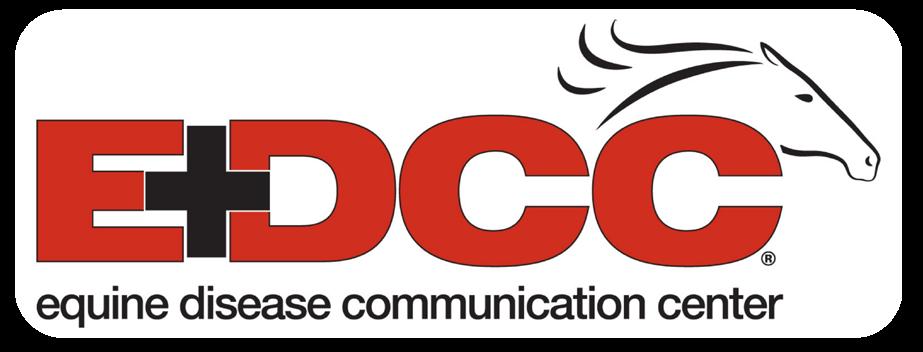
Edited Press Release
Southern Border Ports Shut Down Due to Northward Spread of New World Screwworm
The flesh-eating livestock pest New World screwworm (NWS) has moved closer to the United States border with Mexico and prompted the United States Department of Agriculture (USDA) to halt imports of Mexican cattle, bison, and equines into this country.
The USDA had previously announced a risk-based phase port re-opening strategy for cattle, bison, and equines from Mexico beginning as early as July 7. This new northward detection comes about two months after the ports were closed in early May and the newly reported NWS case raises concern and compromises the outlined port reopening schedule of five ports from July 7–September 15.
“The United States has promised to be vigilant—and after detecting this new NWS case, we are pausing the planned port reopening’s to further quarantine and target this deadly pest in Mexico. We must see additional progress combatting NWS in Veracruz and other nearby Mexican states in order to reopen livestock ports along the Southern border,” U.S. Secretary of Agriculture Brooke L. Rollins said in a release. “Thanks to the aggressive monitoring by
USDA staff in the U.S. and in Mexico, we have been able to take quick and decisive action to respond to the spread of this deadly pest.”
New World Screwworm can cause devasting injury when the fly lays eggs on a wound for exposed tissue and the hatched fly larvae (maggots) burrow into the flesh of a living animal. They can cause serious, often deadly injury and can infest livestock, pets, wildlife, occasionally birds, and in rare cases, people.
In June, the USDA announced its plan to combat New World Screwworm by increasing eradication efforts in Mexico. USDA also announced the groundbreaking of a sterile fly dispersal facility in Southern Texas. This facility will provide a critical contingency capability to disperse sterile flies should an NWS detection be made in the southern United States.
Simultaneously, USDA is moving forward with the design process to build a domestic sterile fly production facility to ensure it has the resources to push NWS back to the Darien Gap. USDA is working on these efforts in lockstep with border states—Arizona, New Mexico, and Texas—as it will take a coordinated approach with federal, state, and

personnel perform site visits throughout Mexico to ensure the Mexican government has adequate protocols and surveillance in place to combat this pest both effectively and efficiently.
In addition, a new NWS screwworm information page was launched to provide tips on what to look for, how to prevent this disease, and how it is treated. The webpage also displays the current status of NWS in Mexico and Central America.
local partners to keep this pest at bay and out of the U.S.
The USDA will continue to have
To read more about New World Screwworm go to the EDCC NWS webpage HERE.
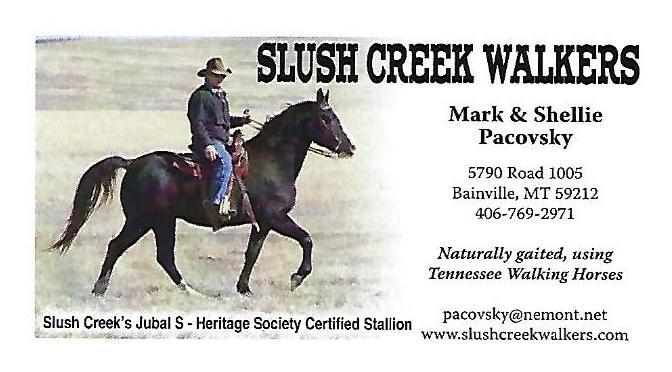

FOSH-Sponsored Carl Bledsoe “Just Gait” Clinic

Friends of Sound Horses (FOSH) sponsored a Carl Bledsoe “Just Gait” clinic in Lake St. Louis, Missouri at the National Equestrian Center, September 19-21, 2025. Fourteen riders took part to focus on proper development and all things gaited, and tremendous progress was made by all during the three-day clinic.
The participants’ horses included Tennessee Walking Horses, Rocky Mountain Horses, Kentucky Mountain Horses, Missouri Fox Trotters, and Racking Horse breeds. The rider’s experience levels ranged from green to accomplished.
FOSH provided scholarships to an adult rider, Payten Rose, and a youth rider, Josie Evans. Judy Schulz and Tamara Sissom were provided with auditor scholarships on behalf of FOSH. Lucy Rangel donated a rider scholarship on behalf of GaitWay
Horse Association (GWHA) which was awarded to Jonathon Bentley.
Carl and Tammy are a dynamic duo who put on clinics across the United States and Canada. They are extremely informative and fun to be around. Carl has made a deep study of classical horsemanship methods, and he shares this information in a way that can be easily understood, with both short classroom sessions and extensive riding exercises that are practical and easy to understand. Tammy assists with 1:1 instruction for those who need additional help in a way that is deeply supportive.
Jonathon Bentley had this to say about his experience at the clinic:
I recently had the pleasure of attending a Carl Bledsoe Clinic, sponsored by Friends of Sound Horses and held at the National Equestrian Center
(NEC), and I can’t say enough good things about the experience.
Carl Bledsoe did an outstanding job as the clinician, presenting in a clear, supportive, and highly educational manner. His ability to help both horses and riders find true balance, develop propulsion from the hind end, and respond softly to the rider’s cues was both impressive and inspiring. Throughout the clinic, he offered a wide range of exercises that encouraged horses to stay engaged, look softly through the bridle, and work in harmony with their riders.
By Gina Vehgie
Adding even more value to the clinic was the incredible guidance from Ms. Tammy who worked closely with riders on proper positioning in the saddle. Her insight helped us find our own balance and stability, which allowed us to become more effective partners and relieve our horses of unnecessary pressure—so their energy could be used efficiently and comfortably.
The facilities at NEC were top-notch. Huge thanks to the staff who went above and beyond to keep the arena beautifully maintained and the

footing in excellent condition—especially important for clinics of this nature. Everything from the watering of the arena to the cleanliness of the grounds contributed to an ideal learning environment.
A very special thank you goes to Ms. Gina Vehgie, who coordinated the event with evident care and attention to detail. From stall arrangements to the smooth scheduling of sessions, her effort made the entire weekend feel effortless for attendees.
Lastly, a heartfelt thank you to all the fellow riders who made the clinic feel so welcoming. The openness and support among participants made it a truly enjoyable and collaborative atmosphere for everyone, especially those attending for the first time.


This clinic was a fantastic blend of professional instruction, supportive community, and excellent facilities. I’m grateful to have been a part of it and am already looking forward to the next opportunity to learn and grow alongside such a dedicated group of horse people.
Payten Rose shared her experience as well:
showed me how to translate that into the saddle. He emphasized how every movement on the ground connects directly to our movements while riding, which gave me a clearer understanding of how to properly help my horse engage her hind end to strengthen both bend and locomotion. I also learned how to better connect with my horse in high-stress environments with multiple distractions, as well as the importance of timing when asking and rewarding through the release of pressure.
Mr. Bledsoe showed us how staying calm and allowing the horse to move their feet without shutting them down creates trust and builds confidence. Instead of relying on punishment or frustration, he demonstrated how to guide the horse to look to us for support when they become distracted or anxious.
Mrs. Bledsoe was equally incredible, helping me find a more balanced seat in the saddle so I wasn’t in my horse’s way and could allow her to engage her hind end while maintaining softness and bend. Her guidance on staying centered and balanced made a huge difference in how easily my horse could respond to my cues. I especially loved watching Mr. and Mrs. Bledsoe work together, always engaging riders, answering questions thoroughly, and encouraging each of us throughout the clinic.
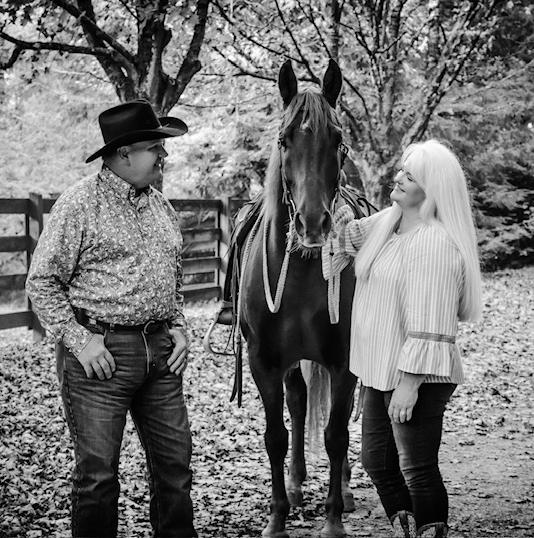
Mr. Bledsoe really helped me refine my body language when asking a horse to complete certain tasks and
I’m deeply grateful to Gina (Vehige) and FOSH for organizing such an amazing event, and to Darryl, Gina’s
wonderful husband, for always being there with a smile and a helping hand. A big “thank you” also goes to the National Equestrian Center for providing such a fantastic facility, with excellent stalls and arena maintenance that made the experience even better. Most of all, I am so proud of my fellow riders and their horses. It was incredible to see everyone grow leaps and bounds over the course of the weekend, and I’m excited to continue practicing what I’ve learned while looking forward to the Bledsoe’s return!
Feedback was very positive from all riders and auditors, and additional clinics are being planned for 2026. To find a clinic in your area, follow “Just Gait” on Facebook or go carlbledsoehorsemanship.com.
The Three Categories of Commercial Horse Feed
When I began providing independent consults on horse feeds, I often heard that owners experienced poor results from what I considered very high-quality feeds. Digging deeper I would invariably discover that the reason for the poor performance was that the feed wasn’t the problem but the application of the feed. In simple terms the poor results were caused by feeding the wrong feed to the wrong horse in the wrong quantity.
The American Association of Feed Company Officials (AAFCO) along with the FDA have designated three distinct categories of commercial feed for horses. The major feed brands follow the guidelines for these categories but some of the smaller regional mills and boutique feeds complicate matters by producing different feeds that really don’t fit into any category so I will describe some general attributes to help guide you in determining what category is best suited for your hay burner.
I’d like to give everyone a reminder that the foundation for all equine diets is sufficient if not unlimited quality forage. Before you consider the best feed to offer it is imperative that your horse has lots of forage available.
Ration Balancer
Ration balancers are at once the simplest yet most understood feed category although they are much more familiar now than before.
A ration balancer is a highly nutrient dense, pelleted feed that is used to provide the nutrients missing from forage while offering limited extra calories. Think of a ration balancer as a protein shake for horses.
If a horse maintains weight on forage alone then the ration balancer is the solution. A ration balancer will provide all the necessary quality protein, amino acids (especially lysine) and microminerals to ensure a sound nutritional balance for many classes of horses.
Ration balancers are typically misfed in both directions, underfed and overfed.
Balancers tend to be underfed when used on obese horses because an owner is trying to eliminate as many calories as possible. Most of the calories in a ration balancer are protein and in the grand scheme of the overall diet contribute very little to weight gain. The benefit of fewer calories in no way outweighs the loss of essential nutrition.
By Jim Fiorini, aka “Jim the Feed Guy”
Using a balancer to promote weight gain is equally unproductive as well as an excellent way to go broke while producing expensive urine.
Another problem with balancers is that owners (and some veterinarians) are not great at math and are put off by the “high” protein in balancers.
The guaranteed analysis for a ration balancer should have protein between 25% and 35% which is terrifying to many uninformed owners who believe that protein causes
laminitis or makes horses crazy. You must remember that balancers are fed in small quantities, typically 1 pound per day for a 1,000-pound horse and when we do the math on the actual AMOUNT of protein in overall diet you will find that the protein in one pound of 32% balancer is far less than 4 pounds of a 12% performance feed.
Performance Feed
The next category of feed is “Performance Feed” also referred to as “concentrated feed”. These feeds are called for when additional calo-


ries are required to cover workload, age and condition.
Performance feeds are intended to be fed IN ADDITION to sufficient forage to support the calorie and fiber requirements of the animal. Referring to the Prime Directive “No supplemental feed shall be selected without the horse having access to sufficient/full time quality forage” is imperative for the application of performance feed.
The most common misapplications for performance feed are…
Underfeeding. The minimum feed rate to assure full nutrition requirements are met typically runs between four and five pounds per day for a 1,000-pound horse. I often hear owners trashing an outstanding performance feed for poor results and when I inquire on the amount fed the reply is invariably “Oh she’s an air fern so she only gets a handful or two”.
If you are feeding a horse half a pound of a feed with a minimum feeding rate of four pounds poor results should not be a surprise.
When your horse is getting fat on less than the minimum daily feed rate of a performance feed it needs to be on balancer.
Overfeeding. Hay is the best weight builder for healthy horses. If you are dealing with an underweight horse or a horse that is a “hard keeper” loading it up with gobs of high fat performance feeds is only going to make matters worse. When you have a 1,000-pound horse on full time forage in light or no work, but you are feeding 10 pounds of a high calorie performance feed, and it still will not maintain weight THERE IS AN UNDERLYING CONDITION preventing weight gain/maintenance. Fix the horse!!
Wrong Energy Match. Performance feeds are designed to provide supplemental nutrition, calories and ENERGY to supplement the horse to meet work requirements. I will use Purina feeds as an example simply because it is a very popular brand. I neither endorse nor disparage the brand.
I refer to Purina Healthy Edge as a “comatose lesson horse feed” per-
fect for those schooling horses or adult beginner to intermediate rider horses. Low carb, higher fat, Healthy Edge is the perfect choice for your daughter’s OTTB.
Purina Ultium Competition is the Healthy Edge cousin for performance horses in serious training and competition. So when an owner of a lovely OTTB gelding ridden by a 14-year-old beginner thinks “I want to feed the BEST feed available” then puts the horse on Ultium Competition the feed takes a hit when the sweet 10-year-old OTTB becomes a snorting dragon flying around the arena.
If you opened a bag of each of these feeds and compared them it is dif-
ficult to tell them apart. Ultium has been built around a superior amino acid profile designed to fuel Grand Prix horses.
Complete Feed
Complete feeds are confusing because they are most often mistakenly used as performance feeds.
The term “complete” can be misleading if it is not put into the proper context. These feeds are fully complete to INCLUDE ALL FORAGE NECESSARY to replace most or all a horse’s long stem forage (grass, hay or both).
The feed tag clues for identifying complete feeds are protein between 11% and 15%, fiber at or above
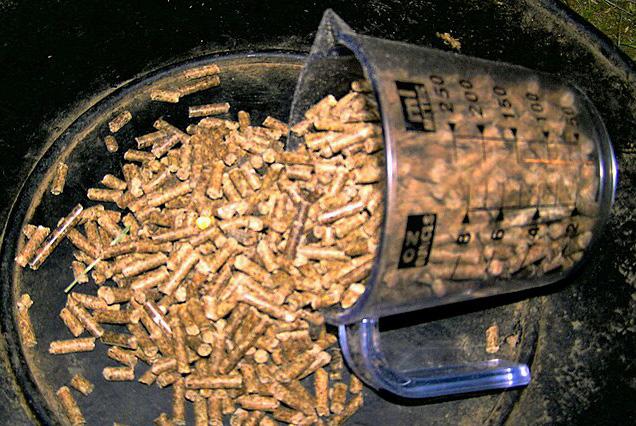
18% and selenium at or below 0.3 PPM. Fat content can vary but ideally should be between 4% and 7%.
The minimum feed rate for complete feed is typically around 6 pounds per day for a 1,000-pound horse in little to no work.
The primary application for complete feeds is for horses with poor dentition, predominantly seniors. This creates confusion because the feed manufacturers invented a “Senior” category for feeds. Not that senior feeds don’t have some features that benefit older horses, but some senior horses have good teeth and still eat hay just fine, which creates more confusion.
There are COMPLETE senior feeds for horses with bad teeth as well as PERFORMANCE senior feeds for horses with good teeth. I’ll use Pu rina as an example again. Purina Equine Senior is a COMPLETE feed designed to be fed in lieu of for age while Purina Senior Active is a PERFORMANCE feed designed to be fed in ADDITION to forage. This causes problems when the applica tions are flipped. If you’re feeding 3 pounds of Equine Senior COMPLETE feed to a horse with good teeth and gobbling hay it will probably look terrible and have no energy. When you try to feed 10 pounds of Purina Senior Active to a horse with poor teeth it will probably look terrible and not feel great.
couple of major feed brands claiming that their senior feeds can be used in either role even though they are spec’d out as performance feeds so read the guaranteed analysis before choosing.
Other applications for complete feeds include:
• Recovering from surgery
• Refeeding neglected horses
• Treating digestive conditions such as irritable bowel syndrome or free fecal water syndrome
• Stretching hay supplies
Again, poor results from feeding a commercial bagged feed might be attributed to improper application of a category of feed along with improper feeding rates and lack of quality forage.
Taking the confusion out of feeding your horse
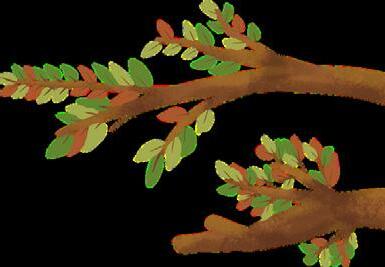

Murdoch Minute
No. 110: Seeing Like a Horse
By Wendy Murdoch
Does your horse shy at stationary objects? Do you feel like he is trying to avoid work? Does he react to the same object again and again no matter how hard you try to make him face it? Understanding how your horse sees can help you come up with a better strategy for solving shying problems.
Next time you ride, notice how your horse carries his head. Is it up in the air, off to one side or looking out on the circle? If he is a frequent shyer, notice how you react to the what he’s doing. Do you hold your breath, tighten your legs or pull on his head?

Does he drop his head and then jump to the side, especially when you kick him to go forward? If you force him to face the object, does he get worse instead of better? Perhaps if you experience what it is like to see the way your horse does you will be more understanding next time he starts to shy.
The horse’s eyes, contrary to popular myth, have more cross hemisphere connections in the brain
than yours have. In other words, horses transfer information from each eye to the opposite side of their brain quite easily*. You still have to train your horse from both sides but this is not because the information hasn’t transferred. Horses also have a great visual ability to detect motion.
Unlike your eyes with round pupils, the horse’s pupils are horizontal. (See Photo 1.) This shape makes his eyes excellent for seeing things far way on the horizon but not very good for seeing things down by his feet. Therefore when you are riding into a corner where there is something on the ground, he cannot see it very well.
In order to get a better look, your horse must line his horizontal pupil up with the object. This causes him to lower and tilt his head to one side. If you punish him at that moment, he will associate the pain with the object, as if the object was the cause of the pain! He will be more concerned the next time because the thing he couldn’t see has bitten him!
To experience what it is like to have horizontal pupils take your thumb and index fingers of both hands and form a slit. (See Photo 2.) Place the slit in front of your eyes and walk around.
Or take a pair of plain glasses and make a horizontal pupil using some tape to block off the top and bottom of the lens. (See Photo 3.) Put the glasses on and walk around, paying special attention to what you have to do with your head to see objects down by your feet. You will have to tilt your head just like your horse!
Walk with your head in the air and you will realize the horse can’t see anything but sky! Walk with your chin tucked to your chest and you can only see a small portion of ground directly below you.
Now that you have a better understanding of what your horse experiences, you can appreciate why he would shy. To help him overcome his fear, stop far enough away from the object to allow him to lower his head to see it clearly. Check that you are breathing. Wait there until he licks and chews, then walk away. Repeat this step many times until you can approach the object from the side (horse parallel to the object) not head on!
Stand near it until he totally relaxes (perhaps 10 minutes if he is really concerned). You may find that he wants to walk up to the object and put his nose on it. You have to
be careful he doesn’t give himself a fright at this moment! However, when he becomes curious instead of fearful, you are getting there! Waiting also gives you time to relax and send the message to him that you are not concerned.
Horses are very sensitive to changes in your breathing and tension and take that as a message to prepare to flee. When you send calming signals, they can relax as well.
Use this Murdoch Minute to experience what it is like to have horse eyes. When you understand how difficult it is to see things by your feet, you can appreciate why your horse might shy.
Give your horse time to evaluate the object from a safe distance where you can both breath, and gradually work toward it until he is able to lick and chew (signs of positive learning). And always remember to enjoy the ride!
Reference
* Hanggi EB. 1999. Interocular transfer in horses (Equus caballus).
J Equine Vet Sci. 1999;19(8):518–524.

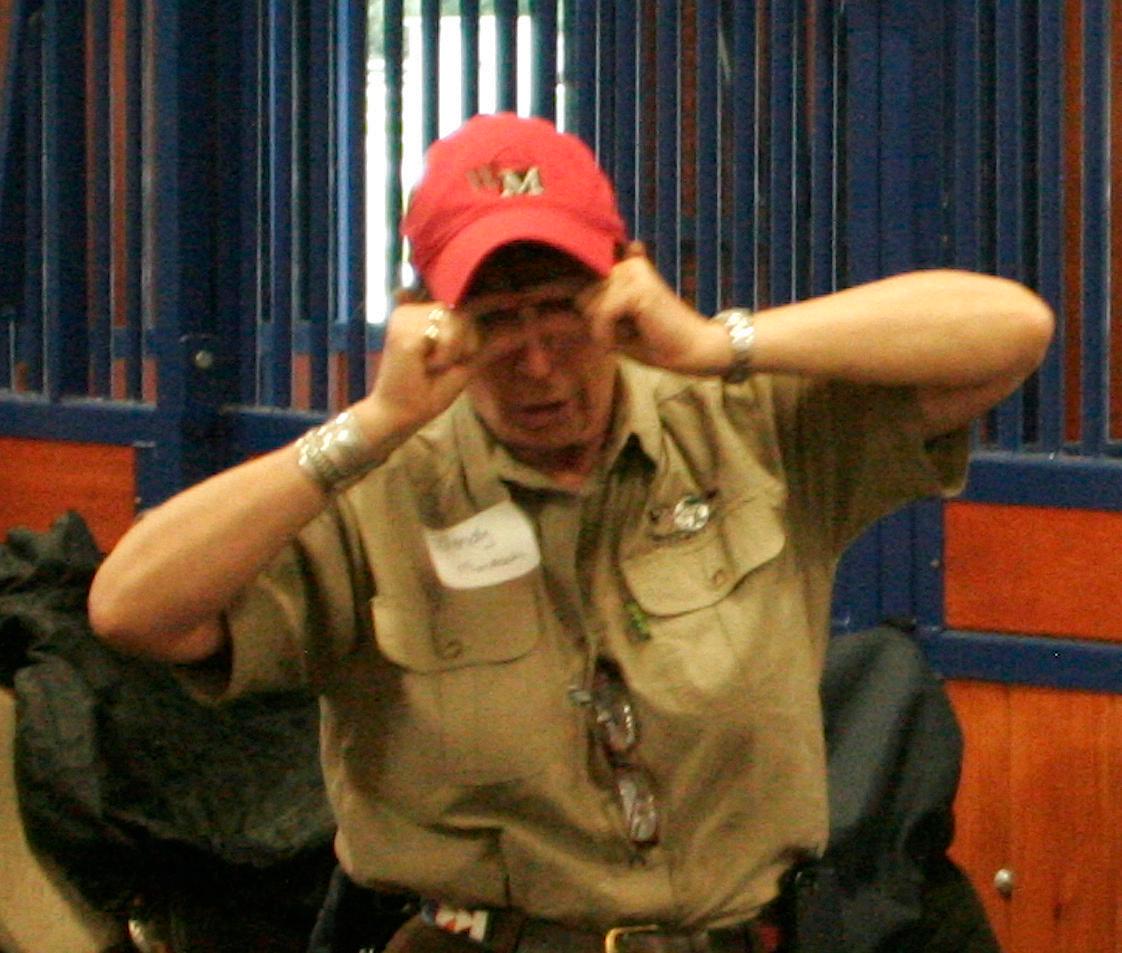

Can Whole Food Nutrition Combat Leaky Gut in Horses?
A new University of Guelph study explores the gut-health potential of activated hemp seed powder
Could a simple, nutrient-rich feed ingredient hold the key to managing one of the most elusive conditions in equine health? A new research initiative at the University of Guelph aims to shed light on a little-understood and potentially widespread condition in horses: leaky gut syndrome. Dr. Wendy Pearson, Associate Professor in the Department of Animal Biosciences, is leading a study that could sow the seeds for innovative nutritional strategies to support equine gut health using activated hemp seed powder.
Leaky gut syndrome, or increased intestinal permeability, occurs when the tight junctions in the gut lining become compromised, allowing substances that should remain in the digestive tract—such as toxins, bacteria, and undigested food particles—to leak into the bloodstream. In humans, this condition has been linked to systemic inflammation, allergies, irritable bowel and colitis. In horses, however, the science is still in its infancy.
“We’re really just beginning to understand what leaky gut looks like in horses,” says Pearson. “There are very few peer-reviewed publications
on the topic in equines. Most of what we know comes from human and non-equine animal models.”
Leaky gut may contribute to a range of chronic, low-grade inflammatory conditions in horses, including poor performance, allergies, and joint issues like osteo-arthritis. Until recently, researchers lacked the tools to measure gut permeability in horses with precision.
Now they are able to use a compound called iohexol—a safe, inert contrast agent used in pediatric medicine—to detect changes in gut permeability. “Iohexol is just slightly too large to pass through healthy tight junctions,” Pearson explains. “So when we see it in the bloodstream after inducing stress, we know those junctions have opened.”
Stressors and diet are suspected contributors to leaky gut in horses. One study from Michigan State University also linked NSAID’S (non-steroidal anti-inflammatory drug) to increased gut permeability, though it remains unclear whether the drugs themselves or the ulcers they cause are to blame. Transport stress followed by moderate exercise has been shown to temporarily increase gut permeability, though the long-term effect of repeated stress is still unknown.
Jackie Bellamy-Zions
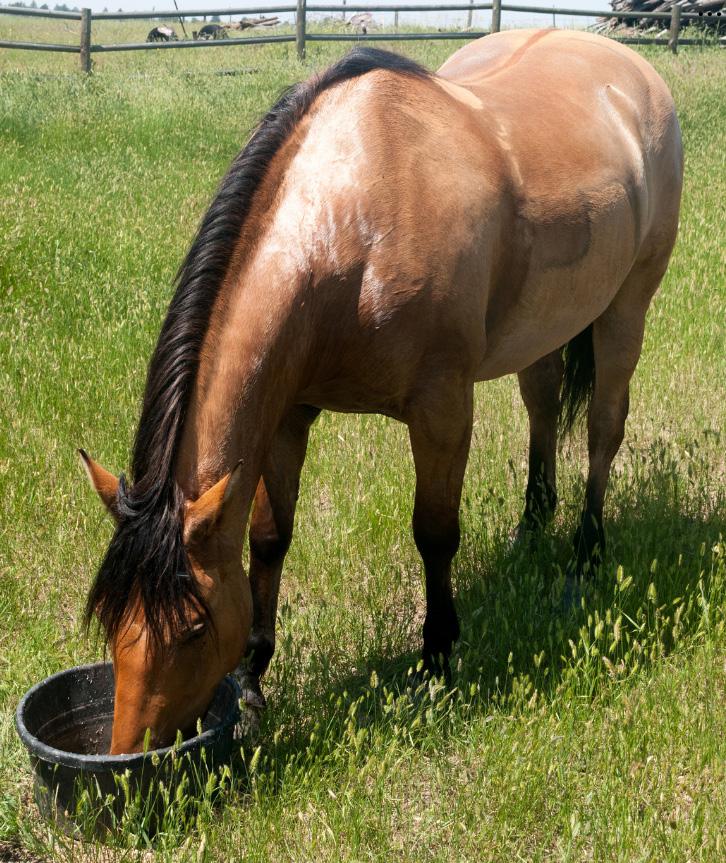
Pearson’s team will explore whether activated hemp seed powder can help protect the gut barrier and reduce inflammation. Hemp seed meal is nutrient-dense and has shown promise in other species for its ability to positively influence the gut microbiome and reduce inflammatory markers.
“What makes this product exciting is that it’s closer to a whole food than a refined nutraceutical,” says Pearson. “The sprouting process enhances its nutritional profile, and early lab work suggests it may have anti-inflammatory effects.”
The study will not only measure gut permeability but also analyze joint fluid and blood samples for inflammatory biomarkers. If successful, the research could open the door to new management strategies for horses facing chronic inflammation or performance issues.
In human studies, there’s a surprising trend: the more physically fit a person is, the more likely they are to experience gastrointestinal hyperpermeability during exercise. Elite athletes often show a more pronounced gut response to physical exertion compared to less active individuals. Whether this same relationship exists in horses is still unknown, but Pearson announces they have an imminent research project to address that question.
Due to a former study, it is known
that transport stress followed by moderate intensity exercise is sufficient to increase permeability of the gut for a short period of time.
“We can’t say exercise causes leaky gut in horses,” Pearson cautions. “But we do know it contributes to short-term changes in gastrointestinal hyperpermeability. What we need to understand is how repeated exposure and fitness levels factor into that equation.”
Pearson underscores that the goal is not to eliminate stressors like exercise, but to better understand how to support horses through them. “We’re trying to understand how to support them through informed management and nutrition.” Gut health is a central concern in equine care.
“Gut health is foundational to a healthy horse,” explains Pearson. “The microbiome plays a critical role in immune function, and the gut lining is the first line of defense against pathogens. If we’re putting horses in situations that compromise that barrier, we need to know about it.”
Until more research is available, horse owners and veterinarians are encouraged to stick to the fundamentals: a forage-based, balanced diet, and as much turnout as possible.
access to turnout,” says Pearson. “That’s not just a personal bias—it’s backed by evidence.”
As the science evolves, Pearson hopes research findings will lead to informed decisions in equine nutrition and training. “This is about generating knowledge that leads to education and education is what ultimately transforms how we care for our horses.”
the epicentre for academia, industry and government – for the good of the equine industry as a whole. For further information, visit equineguelph.ca.
Video link: youtu.be/dPzyCK5hvu8
“Ideally, horses should have 24/7
Interested in learning more about equine gut health? Sign up for Equine Guelph’s short online course: Gut Health & Colic/Ulcer Prevention at TheHorsePortal.ca and the 12week online Equine Nutrition Course at University of Guelph.
References
1. https://pubmed.ncbi.nlm.nih. gov/36210653
2. McGilloway M, Manley S, Aho A, Heeringa KN, Lou Y, Squires EJ, Pearson W. The combination of trailer transport and exercise increases gastrointestinal permeability and markers of systemic inflammation in horses. Equine Vet J. 2023 Sep;55(5):853–861. doi: 10.1111/ evj.13888. Epub 2022 Nov 9. PMID: 36210653.
Equine Guelph is the horse owners’ and care givers’ Centre at the University of Guelph in Canada. It is a unique partnership dedicated to the health and well-being of horses, supported and overseen by equine industry groups. Equine Guelph is
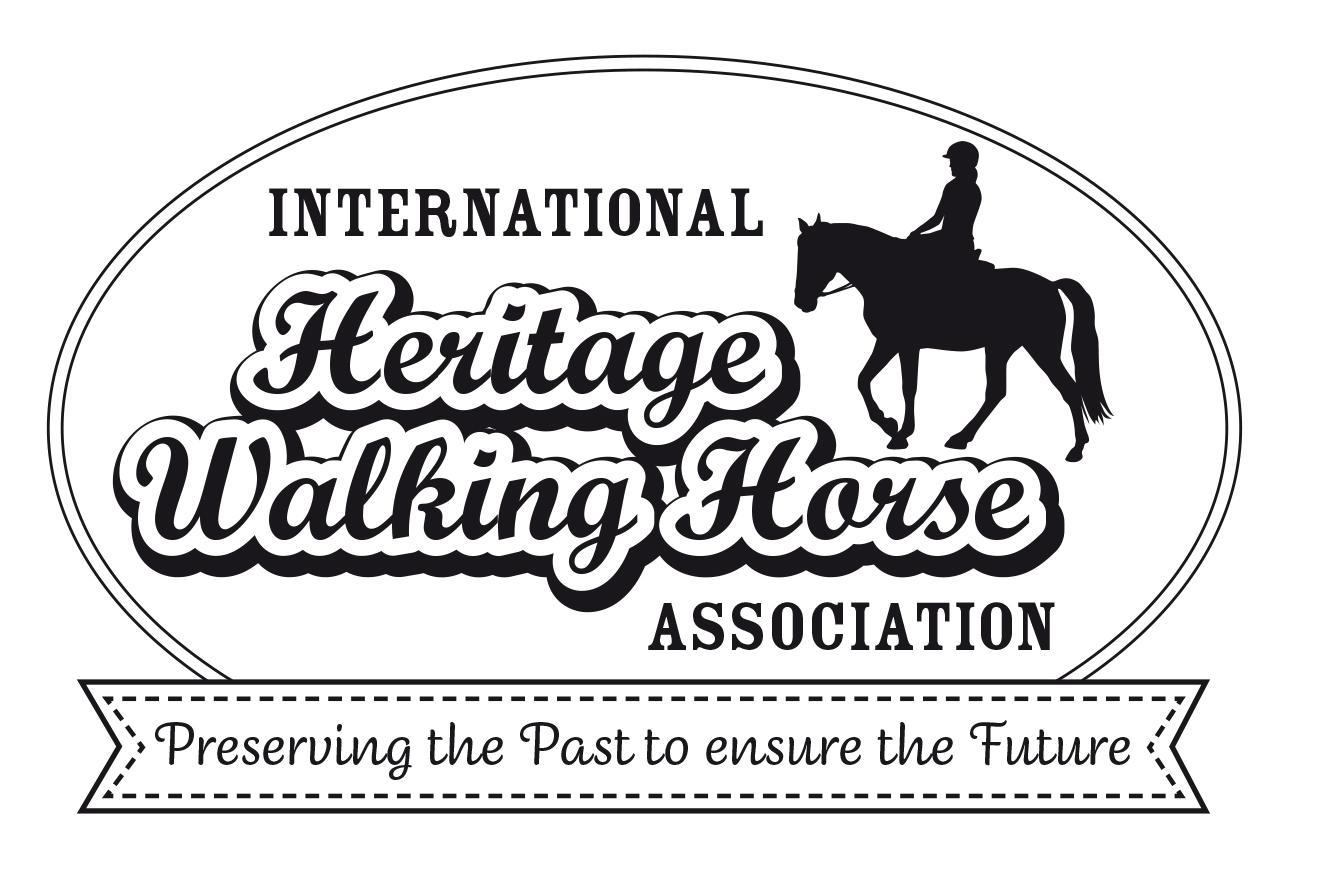

Horizon Structures Presents: Top 10 Humorous Home Truths of Horse Barn Building
Is a new horse barn on your horizon? Are you ready for what’s coming your way? Despite best efforts during construction things don’t always go to plan. Here is a humorous look at the top 10 home truths of horse barn building and some solid solutions:
1. It Looked Smaller on Paper –whether your plans are viewed online or you have the paper variety in hand, buildings always seem to come out bigger than expected in real life. This can make it hard to visualize the final result during those crucial planning stages. Solution: Use a construction partner that offers 3D renderings and walk-throughs of your barn before the nail guns start firing. Changes on paper are easy and cheaper to make than changes determined once construction begins. Make sure your barn design really does, ‘work for you on paper’ before you saddle-up for the construction ride.
2. It’s Always The Last Stone Unturned – Building a barn often involves some form of site excavation, levelling of the area and digging work including large, drilled holes to accommodate Sonotubes or other cement support for weight bearing structures. All intended locations will
be carefully mapped out beforehand. You can guarantee the last hole dug in the lineup will always be the one with a huge rock beneath. And of course in other cases where rocks are not a geological issue, you’ll discover a spring which will always be directly in the middle of the spot that you wish to place the barn. Solution: Get your site and apron area leveled, drained and excavated early so you have time to fix surprise discoveries before the barn is constructed. There is no ‘perfect’ site but here are some hot tips to help you mitigate the risk of making major mistakes. Expect the unexpected. Most issues can easily be addressed.
3. Access Point To Site Is Always 2 Inches Too Small – Gatepost to gatepost measurements or obstacles like low-hanging tree branches or tight turns with fencing or buildings close by will always be just a tad too tiny to fit something….the barn itself on its delivery vehicle; the bulldozer or excavator on a trailer. Solution: Build your barn before you hard or soft landscape or add permanent driveways if possible. If this isn’t possible, measure twice and report once any limitation on access and address how to resolve access issues before the heavy equipment, building or supplies arrive. Here is some sage
advice on how to size up your horse barn and farm entranceways.
4. The Roof Install Date Will Always Coincide With Wet and Windy Weather – you can almost forecast the weather the moment your barn roof install date is set. Wet and windy weather will arrive in timely fashion to cause major delays in the building timeline. Similarly if the barn is being painted that day will coincide with the hottest most humid day of the year topped off with a drenching monsoon thunderstorm that will negatively affect the paint or stain application. Solution: Buy a modular barn that arrives with 90% of the roof already built so minor connecting and finishing work is all that is required and all painting and staining is completed in a temperature controlled clean environment. Also – there are many different roof options, choose the right hat for your barn.
5. The Barn Will Always Be Ready 3 Days After Your Boarding Contract Expires – Your 30-day notice period at the boarding barn for departure will always expire just a few days before you can move your horses into your new barn. This can cause much angst and more expenses for temporary alternative care location or extending boarding time for an
Nikki Alvin-Smith
extra 30 days and losing money for days you aren’t there. Solution: Get an accurate delivery timeframe and work with a company that has the proven resources to deliver on time. A modular build from a factory will not be subject to weather or material supply delays.
6. As Soon As You Sign On The Dotted Line You’ll See A Cheaper Barn Somewhere Else – Due diligence and much research on your new barn has been executed and of course everyone worries a little bit about ‘what have I done’ after they’ve committed to buy. Especially if the dollar spend is a financial push. Solution: There will always be a cheaper barn option. But look further than skin deep and don’t be duped. You’ll usually find there are shortcuts in the cheaper options that you wouldn’t be happy about such as lower grade wood, lesser quality craftsmanship etc. The general rule is to buy the best you can afford. Don’t forget to look for financing help.
7. Go The Extra Foot or Stall – An 11 foot aisleway will always feel tight because – well, it is. The standard width for a center aisle is 12 foot. Some are wider but go too wide and cross-ties (if you use them) won’t be an option. Don’t go off standard
measurements if you don’t have to because you will regret it later. Similarly, if you build the extra stall or two, you know you’ll use it. A solution would be to minimize the chance of regrets in building design by working with a knowledgeable and accessible staff who can offer suggestions and give advice to solve problems. And remember, the dimensions on plans are exterior measurements. So the interior space will be less the width of framing lumber, siding and kickboards.
8. New Wood Nibbles – the minute you turn your back and leave your horse safely ensconced in his new stable with the stall deeply bedded and smelling delightfully of fresh pine, know your contentment may not last long. Because if you’ve forgotten to protect any angular surface from wood chewing he’ll find it and enjoy a good nibble. Solution: Ensure you have metal protection on all horse reachable exposed angles before the horse takes up residence. It’s also a good idea to have the interior stall walls and doors sealed for easy cleaning before your horse christens the wall with manure. Which of course he will also do to add his personal decorative touch to the new space within the first few hours of arrival.
9. Square Corners Don’t Exist –when it comes time to lay stall mats you soon discover that square corners don’t really exist and mats will likely need cutting to fit. The larger the footprint of the horse structure
the more likely it will be that the corners are slightly out of perfect square.
Solution: A factory-built barn is more likely to be accurately built than a site-built structure and that all begins with the footprint. Modular barns are built on a level, concrete platform without complications of grade variances. Remember if the footprint of a building begins off not square, then the problem will be magnified as you build higher. This can cause issues with fitting trim in finished space like tack rooms or offices, tiling washroom floors etc.
10. The Minute You Hang Up The Phone You’ll Think Of Another Burning Question – during the planning and buying process you can expect some back-and-forth emails and hopefully good old-fashioned personal interaction with the construction partner on the phone or in person. You can expect that as each interaction brings up other information new questions will pop in your head. Solution: Choose your construction firm carefully. Don’t be shy to be a nuisance, a good construction partner will always be ready to address your concerns. Not sure who to pick? Here’s some guidance on what to look for and red flags to avoid.
The new barn project should be a fun and satisfying experience. These tips will hopefully help you along the trail to making a successful choice and enjoying a fabulous outcome. Congratulations on your new barn!
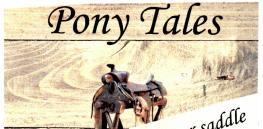


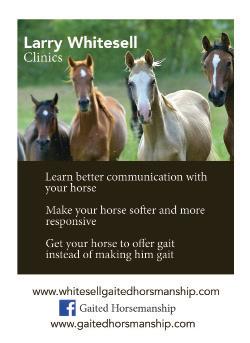
OUR FOREVER FRIENDS
FOSH Lifetime Members
Jo Anne Behling, Wauwatosa, WI
Esther L. Bell, TN
Pamela Brand, Carlisle, PA
Sarah Bushong-Weeks, Denver. CO
Julie Church, Pagosa Springs, CO
Mary & William Church, Pagosa Springs, CO
Luella DeBono, Eden Prairie, MN
Beverly Foster, St. Augustine, FL
Nancy Gillespie, Pullman, WA
Cristine Holt, Dubuque, IA
Jane Howlett, Pocatello, ID
Marjorie Lacy & Walking Horse News, Edson, Alberta
Sue De Laurentis, Dripping Springs, TX
Bobbie Jo Lieberman
Dianne Little, Calgary, Alberta
Debbie Locke, Mack, CO
Ann Loveless, Ashtabula, OH
Patricia Mayer, East Aurora, NY
Janelle T. McCoy, Prague, OK
Frank Neal, Nashville, TN
Lori Northrup, Ellicottville, NY
Anne Northrup, Ellicottville, NY
Shellie Pacovsky, Bainville, MT
Denise Parsons
Anita Rau, Catlett, VA
Debbie Rash, Chino, CA
Southern Comfort Gaited Horse Club, ID
Bucky & Nancy Sparks, Cortez, CO
Marcy Wadington, Canon City, CO
Leslie Weiler, Pagosa Springs, CO
Laura Wyant, Chesire, OR
An Anonymous Donor
Yankee Walkers of New England
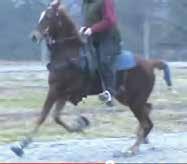
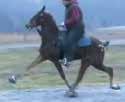
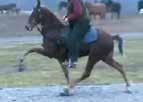
“Without
Soring
Soring
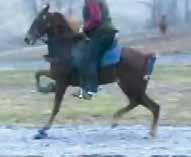


the chains, there would be no need
d a
“Without the chains, there would be no need for a scar rule.”
for a scar rule.”
– humane acTivisT, may, 2011.
– humane acTivisT, may 2011.
ho W t o d ete ct
ho W t o d ete ct
• Palpation
• Palpation
“That
Chemical Soring
Chemical Soring
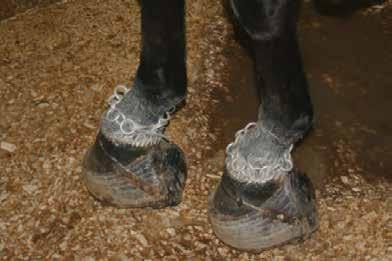
W h at i s s oring ?
W h at i s s oring ?
Soring is deliberately inducing pain to exaggerate a gaited horse’s movement for the show ring. A variety of devious and cruel methods have been devised over the years. Soring violations also include many methods used to avoid detection. Soring is against Federal law and is subject to fines and penalties if detected at a public show or sale.
Soring is deliberately inducing pain to exaggerate a gaited horse’s movement for the show ring. A variety of devious and cruel methods have been devised over the years. Soring violations also include many methods used to avoid detection. Soring is against Federal law and is subject to fines and penalties if detected at a public show or sale.
Chemical soring is the application of painful, caustic liquids to tenderize the horse’s pastern area (ankle), so the repeated strike of a chain is painful and causes the horse to snatch his foot higher with each step. The chain, a crucial part of this show horse style, is termed an “action device,” and the exaggerated gaits cannot be created without this chain.
ho W i t ’ s d one
ho W i t ’ s d one
ho W t o d etect
ho W t o d etect
Observations:
Observations:
• Horse lies down in stall and groans in pain.
• Horse lies down in stall and groans in pain.
• Horse is crampy and unwilling to move.
• Horse is crampy and unwilling to move.

“That just looks wrong.”
Chemical soring is the application of painful, caustic liquids to tenderize the horse’s pastern area (ankle), so the repeated strike of a chain is painful and causes the horse to snatch his foot higher with each step. The chain, a crucial part of this show horse style, is termed an “action device,” and the exaggerated gaits cannot be created without this chain.
• Gas chromotography or “sniffer”
• Gas chromotography or “sniffer”
• Thermography
• Thermography
10-year-olD boy while waTching viDeo of a “big lick” horse shown in sTacks anD chains, June 10, 2011.
• Blood or saliva tests
just looks wrong.” 10-year-olD boy while waTching viDeo of a “big lick” horse shown in sTacks anD chains June 10, 2011.
• Blood or saliva tests
• Drug-detection trained dog
• Drug-detection trained dog

• Horse warms up into motion with a “praying mantis stance,” with abnormal weight thrown on his hind quarters to avoid front end pain.
• Horse warms up into motion with a “praying mantis stance,” with abnormal weight thrown on his hind quarters to avoid front end pain.
• Horse stands in classic “standing in a bucket” pose to alleviate pain in front legs (photo above).
• Horse stands in classic “standing in a bucket” pose to alleviate pain in front legs (photo above).
• kerosene
• kerosene
• diesel
• diesel
• croton oil
• croton oil
• GoJo hand cleaner
• GoJo hand cleaner
• WD40 oil
• WD40 oil
• mustard oil
• mustard oil
Soring includes the abuse of chains, foreign substances and chemicals, illegal shoeing to change the natural hoof angles, length of toe, weighted shoes, pressure shoeing, as well as the insertion of blocks and other devices between the hoof and the shoe stack to place pressure on the frog and sole of the foot to create pain in the front end of the horse. These methods all cause the horse to attempt to avoid the pain by picking up his front feet faster and higher, and shifting his weight back onto his hocks. Slang for an obviously sore-going horse is “going too deep.”
Soring includes the abuse of chains, foreign substances and chemicals, illegal shoeing to change the natural hoof angles, length of toe, weighted shoes, pressure shoeing, as well as the insertion of blocks and other devices between the hoof and the shoe stack to place pressure on the frog and sole of the foot to create pain in the front end of the horse. These methods all cause the horse to attempt to avoid the pain by picking up his front feet faster and higher, and shifting his weight back onto his hocks. Slang for an obviously sore-going horse is “going too deep.”
With the increased scrutiny of soring-related scars, another cruel practice is used to remove the telltale scarring. The horse’s legs are covered in a chemical stripping agent, which burns off old scar tissue through a very painful process.
Wh Y is t h is a b use d o ne?
• Visual inspections for:
• Visual inspections for:
Wh Y is t h is a b use d o ne?
Soring is practiced to get gaited horses to artificially enhance their step to win in shows. A winning image is rewarded with ribbons, cash, recognition, future breedings and training fees.
Soring is practiced to get gaited horses to artificially enhance their step to win in shows. A winning image is rewarded with ribbons, cash, recognition, future breedings and training fees.
en F o
– scarring and inflammation, signs of soring insults.
– scarring and inflammation, signs of soring insults.
– wavy, rippled, curly hair on the front legs, an indicator of repeated chemical soring with leg wraps.
– wavy, rippled, curly hair on the front legs, an indicator of repeated chemical soring with leg wraps.
rcement
en F o rcement
t o e nd s oring
t o e nd s oring
Chemicals are applied to the horse’s lower legs, then the leg is wrapped in plastic for days. This causes the chemicals to “cook” into the flesh. This creates highly sensitized front pasterns that are painful when the chain strikes with every step. Examples of soring chemicals used:
Chemicals are applied to the horse’s lower legs, then the leg is wrapped in plastic for days. This causes the chemicals to “cook” into the flesh. This creates highly sensitized front pasterns that are painful when the chain strikes with every step. Examples of soring chemicals used:
There is a federal law called the Horse Protection Act, which prohibits soring at shows and sales, enforced by the USDA. However, most inspections are selfregulated by HIOs (horse industry organizations licensed by the USDA.)
With the increased scrutiny of soring-related scars, another cruel practice is used to remove the telltale scarring. The horse’s legs are covered in a chemical stripping agent, which burns off old scar tissue through a very painful process.
There is a federal law called the Horse Protection Act, which prohibits soring at shows and sales, enforced by the USDA. However, most inspections are selfregulated by HIOs (horse industry organizations licensed by the USDA.) d a
“The
– cording, a type of scarring caused by the plastic wrap sliding down and tightly bunching around the pasterns.
– cording, a type of scarring caused by the plastic wrap sliding down and tightly bunching around the pasterns.
– checking for application of foreign substances, by walking the barns and trailers at a show.
– checking for application of foreign substances, by walking the barns and trailers at a show.
Pressure Soring
Pressure Soring

Pressure soring causes pain in a horse’s front feet, so when each front hoof hits the ground, the horse will “snatch” the foot off the ground, resulting in an unnatural, high, dramatic step.
Pressure soring causes pain in a horse’s front feet, so when each front hoof hits the ground, the horse will “snatch” the foot off the ground, resulting in an unnatural, high, dramatic step.
ho W i t ’ s d one
ho W i t ’ s d one
• Grinding the hoof sole down so thin “beads of blood show” and the sole gets spongy and super-sensitive.
• Grinding the hoof sole down so thin “beads of blood show” and the sole gets spongy and super-sensitive.
• Taking the hoof wall down slightly shorter than the sole, so it provides no supporting protection, called “rolling the sole.”
• Taking the hoof wall down slightly shorter than the sole, so it provides no supporting protection, called “rolling the sole.”
• Inser ting hard objects between the shoe or pad and the tender sole, such as bolts (removable for inspections), half a golf ball, hardened epoxy, or a dried piece of hoof.
• Inser ting hard objects between the shoe or pad and the tender sole, such as bolts (removable for inspections), half a golf ball, hardened epoxy, or a dried piece of hoof.
• Response to hoof testers (ideal if shoes are pulled first).
• Response to hoof testers (ideal if shoes are pulled first).
• Digital radiography (x-ray will show extreme thinness of sole, any foreign objects, or excessive coffin bone rotation).
• Digital radiography (x-ray will show extreme thinness of sole, any foreign objects, or excessive coffin bone rotation).
• Thermography to detect hot spots from pain.
• Thermography to detect hot spots from pain.
Methods Used to Avoid Detection at Inspection
Methods Used to Avoid Detection at Inspection
• numbing agents that wear off between inspection and show time (such as injected anesthetic, “the shot,” or surface application of Lidocaine).
• numbing agents that wear off between inspection and show time (such as injected anesthetic, “the shot,” or surface application of Lidocaine).
• “stewarding”: teaching the horse at practice inspections that flinching or reacting will cause worse pain, such as a beating or using a “hot stick” or electric prod.
• “stewarding”: teaching the horse at practice inspections that flinching or reacting will cause worse pain, such as a beating or using a “hot stick” or electric prod.
topical samples from Tennessee Walking Horses had the highest incidences of positives (of illegal substances from gas chromatography samplings)
“The topical samples from Tennessee Walking Horses had the highest incidences of positives (of illegal substances from gas chromatography samplings) that I’ve
ever seen in my life.”
that I’ve ever seen in my life.”
— Dr Tomas Tobin leaDing veTerinarian in Drug conTrol anD Toxicology in compeTiTion horses, november 5, 2010 www.thomastobin.com
— Dr. Tomas Tobin, leaDing veTerinarian in Drug conTrol anD Toxicology in compeTiTion horses november 5, 2010 www.thomastobin.com
Fixing … Touching … “putting them in a bucket” … Soap ‘em … Fly spray (a term owners use so they can avoid admitting knowing that an illegal substance has been used on their horse) … getting them right … brushing them … square ‘em up … head shake in a bottle … dropping them … Mojo (commonly used by people referring to GoJo hand cleaner) …
Fixing … Touching … “putting them in a bucket” … Soap ‘em … Fly spray (a term owners use so they can avoid admitting knowing that an illegal substance has been used on their horse) … getting them right … brushing them … square ‘em up … head shake in a bottle … dropping them … Mojo (commonly used by people referring to GoJo hand cleaner) …
• “Blocking,” which is standing the horse for hours on wedges duct-taped to the hoof.
• “Blocking,” which is standing the horse for hours on wedges duct-taped to the hoof.
• Purposely foundering a young horse (called “the natural fix” and “nature’s way of soring”).
• Purposely foundering a young horse (called “the natural fix” and “nature’s way of soring”).
• “Road foundering” the horse by riding fast on a hard surface such as a paved road.
• “Road foundering” the horse by riding fast on a hard surface such as a paved road.
• Extreme tightening of metal hoof bands to cause pain from excessive pressure on the hoof.
• Extreme tightening of metal hoof bands to cause pain from excessive pressure on the hoof.
• distraction devices: a nerve gum cord, bit burr under the saddle, hand twitch, alligator clips on sensitive genital tissue, or surgical staples under the mane, applied just before an inspection to cause distracting pain elsewhere during the inspection.
• distraction devices: a nerve gum cord, bit burr under the saddle, hand twitch, alligator clips on sensitive genital tissue, or surgical staples under the mane, applied just before an inspection to cause distracting pain elsewhere during the inspection.
• horse switching: providing a substitute horse for inspection under false paperwork, and then switching and putting the sored horse into the show ring.
• horse switching: providing a substitute horse for inspection under false paperwork, and then switching and putting the sored horse into the show ring.
fixing … pressure soring … “putting the fever in the foot” … pressure shoeing … “pinching the toes” … bolting … blocking … “under pressure” … “in a bind” … quicked … hot nailed … “tightened up” (for bands) … cranking …
“fixing below the pastern” … going too deep … concussion foundering … “peak point” describes the maximum pain point in the weekly soring process …
fixing … pressure soring … “putting the fever in the foot” … pressure shoeing … “pinching the toes” … bolting … blocking … “under pressure” … “in a bind” … quicked … hot nailed … “tightened up” (for bands) … cranking … “fixing below the pastern” … going too deep … concussion foundering … “peak point” describes the maximum pain point in the weekly soring process …

Chemical Soring
Chemical soring is the application of painful, caustic liquids to tenderize the horse’s pastern area (ankle), so the repeated strike of a chain is painful and causes the horse to snatch his foot higher with each step. The chain, a crucial part of this show horse style, is termed an “action device,” and the exaggerated gaits cannot be created without this chain.
ho W i t ’ s d one
Chemicals are applied to the horse’s lower legs, then the leg is wrapped in plastic for days. This causes the chemicals to “cook” into the flesh. This creates highly sensitized front pasterns that are painful when the chain strikes with every step. Examples of soring chemicals used:
• kerosene
• diesel
• croton oil
• GoJo hand cleaner
• WD40 oil
• mustard oil
With the increased scrutiny of soring-related scars, another cruel practice is used to remove the telltale scarring. The horse’s legs are covered in a chemical stripping agent, which burns off old scar tissue through a very painful process.
“Without the chains, there would be no need for a scar rule.”
– humane acTivisT, may 2011.
ho W t o d ete ct
• Palpation
• Gas chromotography or “sniffer”
• Thermography
• Blood or saliva tests
• Drug-detection trained dog
• Visual inspections for:

– scarring and inflammation, signs of soring insults.
– wavy, rippled, curly hair on the front legs, an indicator of repeated chemical soring with leg wraps.
– cording, a type of scarring caused by the plastic wrap sliding down and tightly bunching around the pasterns.
– checking for application of foreign substances, by walking the barns and trailers at a show.

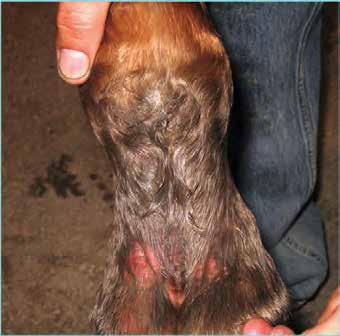
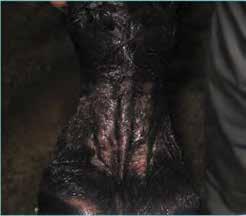
Fixing … Touching … “putting them in a bucket” … Soap ‘em … Fly spray (a term owners use so they can avoid admitting knowing that an illegal substance has been used on their horse) … getting them right … brushing them … square ‘em up … head shake in a bottle … dropping them … Mojo (commonly used by people referring to GoJo hand cleaner) …

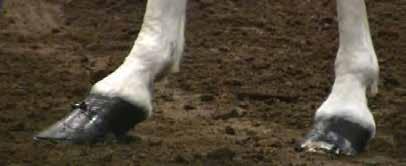
Observations:
etect
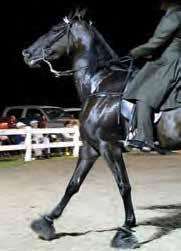
• Horse lies down in stall and groans in pain.
What Can Be Done to End Soring?
What Can Be Done to End Soring?
What W o uld have the biggest impact on eliminating soring?
What W o uld have the biggest impact on eliminating soring?
Pressure Soring
Pressure soring causes pain in a horse’s front feet, so when each front hoof hits the ground, the horse will “snatch” the foot off the ground, resulting in an unnatural, high, dramatic step.
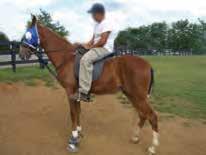
positions who has had soring violations within recent years.
• Horse is crampy and unwilling to move.
• Join FOSH or the HSUS.
positions who has had soring violations within recent years.
• Horse warms up into motion with a “praying mantis stance,” with abnormal weight thrown on his hind quarters to avoid front end pain.
• Volunteer for FOSH projects to end soring.
• Join FOSH or the HSUS.
Voice Your Concerns
• Volunteer for FOSH projects to end soring.
Voice Your Concerns
• Horse stands in classic “standing in a bucket” pose to alleviate pain in front legs (photo above).
3q More money allocated to the USDA’s enforcement. At present, USDA’s inspectors attend only 7% of the shows, due to budget constraints. Relying on “self-policing” with industry inspectors has not been effective over the past decades.
3q More money allocated to the USDA’s enforcement. At present, USDA’s inspectors attend only 7% of the shows, due to budget constraints. Relying on “self-policing” with industry inspectors has not been effective over the past decades.
ho W i t ’ s d one
• Tell your Congressmen that you demand full enforcement of the law and adequate HPA funding.
• Tell your Congressmen that you demand full enforcement of the law and adequate HPA funding.
• Response to hoof testers (ideal if shoes are pulled first).
• Inform traditional show venues and their sponsors that you will not suppor t them because these shows encourage soring.
• Inform traditional show venues and their sponsors that you will not suppor t them because these shows encourage soring.
• Digital radiography (x-ray will show extreme thinness of sole, any foreign objects, or excessive coffin bone rotation).
3q Severe penalties for those guilty of soring. Substantial fines and mandatory, serious suspension periods for trainers and owners, including lifetime bans and prison time, would deter soring.
• Grinding the hoof sole down so thin “beads of blood show” and the sole gets spongy and super-sensitive.
3q Severe penalties for those guilty of soring. Substantial fines and mandatory, serious suspension periods for trainers and owners, including lifetime bans and prison time, would deter soring.
• Demand t hat the USDA and the industry inspectors enforce the law effectively.
• Demand t hat the USDA and the industry inspectors enforce the law effectively.
• Thermography to detect hot spots from pain.
Report Soring to the USDA, HSUS, and FOSH:
• Document soring incidences observed at barns or shows with photos or video and submit personally or anonymously.
Report Soring to the USDA, HSUS, and FOSH:
Methods Used to Avoid Detection at Inspection
3q Federal ban on “pads and action devices,” commonly termed “stacks and chains.”
3q Federal ban on “pads and action devices,” commonly termed “stacks and chains.”
W h at c an Y o u d o t o h elp e nd s oring ?
• Document soring incidences observed at barns or shows with photos or video and submit personally or anonymously.
• Report barns and trainers engaging in soring practices.
• Report scheduled “outlaw shows” organized without licensed HIO inspections.
• Report barns and trainers engaging in soring practices.
• Taking the hoof wall down slightly shorter than the sole, so it provides no supporting protection, called “rolling the sole.”
W h at c an Y o u d o
Learn More
t o h elp e nd s oring ?
Learn More
• Inser ting hard objects between the shoe or pad and the tender sole, such as bolts (removable for inspections), half a golf ball, hardened epoxy, or a dried piece of hoof.
• numbing agents that wear off between inspection and show time (such as injected anesthetic, “the shot,” or surface application of Lidocaine).
• www.StopSoring.com for latest news and facts on soring
• www.SoundHorseConference.com for presentation lectures on soring
• www.StopSoring.com for latest news and facts on soring
• www.SoundHorseConference.com for presentation lectures on soring
• United States Department of Agriculture (USDA) on Horse Protection www.aphis.usda.gov/animal_welfare/hp
• “Blocking,” which is standing the horse for hours on wedges duct-taped to the hoof.
Friends of Sound Horses, Inc. (FOSH)
• Report scheduled “outlaw shows” organized without licensed HIO inspections.
Lori Northrup, President 6614 Clayton Road #105, St. Louis, MO 63117 716-474-7580 • Lori@Northrup.com
Friends of Sound Horses, Inc. (FOSH)
• “stewarding”: teaching the horse at practice inspections that flinching or reacting will cause worse pain, such as a beating or using a “hot stick” or electric prod.
The Humane Society of the United States (HSUS)
Lori Northrup, President 6614 Clayton Road #105, St. Louis, MO 63117 716-474-7580 • Lori@Northrup.com
The Humane Society of the United States (HSUS)
• United States Department of Agriculture (USDA) on Horse Protection www.aphis.usda.gov/animal_welfare/hp
• Purposely foundering a young horse (called “the natural fix” and “nature’s way of soring”).
• Humane Society of the United States (HSUS) http://www.humanesociety.org/issues/tenn_ walking_horses
Get
• Humane Society of the United States (HSUS) http://www.humanesociety.org/issues/tenn_ walking_horses
Involved
• “Road foundering” the horse by riding fast on a hard surface such as a paved road.
Get Involved
• Extreme tightening of metal hoof bands to cause pain from excessive pressure on the hoof.
• distraction devices: a nerve gum cord, bit burr under the saddle, hand twitch, alligator clips on sensitive genital tissue, or surgical staples under the mane, applied just before an inspection to cause distracting pain elsewhere during the inspection.
• Run for a Board of Directors’ position with the Tennessee Walking Horse Breeders & Exhibitors Association (TWHBEA) and effect change from within.
• Run for a Board of Directors’ position with the Tennessee Walking Horse Breeders & Exhibitors Association (TWHBEA) and effect change from within.
Keith Dane, Director of Equine Protection 700 Professional Drive, Gaithersburg, MD 20879 301-258-3076 • kdane@hsus.org
Keith Dane, Director of Equine Protection 700 Professional Drive, Gaithersburg, MD 20879 301-258-3076 • kdane@hsus.org
United States Department of Agriculture, APHIS (USDA)
Dr. Rachel Cezar, Horse Protection Coordinator Dr. Chester Gipson, Deputy Administrator 4700 River Road, Suite 6D03, Riverdale, MD 20737 301-734-5784 • Rachel.Cezar@aphis.usda.gov
United States Department of Agriculture, APHIS (USDA)
• horse switching: providing a substitute horse for inspection under false paperwork, and then switching and putting the sored horse into the show ring.
• Propose changes to the TWHBEA bylaws that preclude anyone from holding leadership
• Propose changes to the TWHBEA bylaws that preclude anyone from holding leadership
Dr. Rachel Cezar, Horse Protection Coordinator Dr. Chester Gipson, Deputy Administrator 4700 River Road, Suite 6D03, Riverdale, MD 20737 301-734-5784 • Rachel.Cezar@aphis.usda.gov
“Call it what it is. This is torture.” — inTernaTionally-renown clinician february 2011
fixing … pressure soring … “putting the fever in the foot” … pressure shoeing … “pinching the toes” … bolting … blocking … “under pressure” … “in a bind” … quicked … hot nailed … “tightened up” (for bands) … cranking …
“fixing below the pastern” … going too deep … concussion foundering … “peak point” describes the maximum pain point in the weekly soring process …
FOSH Sound Principles
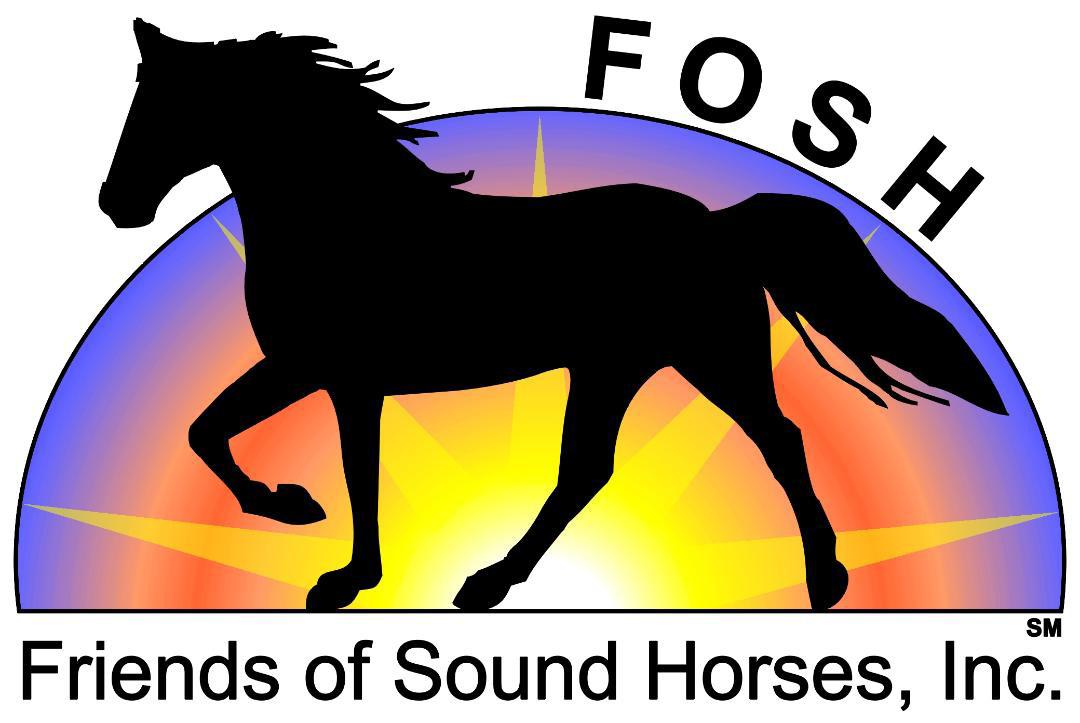
Principle #1
All FOSH events adhere to the requirements of the Horse Protection Act.
Principle #2
Horses are to be treated with dignity, respect, and compassion.
Principle #3
Horses must be presented as sound in both body and mind.
Principle #4
The preferred way of going is natural, correct, and without exaggeration.
Principle #5
Shoeing is intended only for the protection of the foot and its structure. Where practical, barefoot horses are both welcomed and encouraged.
Principle #6
Handlers and riders are expected to use training techniques and equipment that conform to the highest humane standards as recognized by the general equestrian community.
Principle #7
Exhibitors have a duty to conduct themselves in an orderly, responsible, and sportsmanlike manner.
FOSH is a national leader in the promotion of natural, sound gaited horses and in the fight against abuse and soring of Tennessee Walking Horses. For more information about FOSH or to become a member, please visit www. fosh.info.
Gaited Clubs
FOSH Directory
Southern Comfort Gaited Horse Club
Southern Comfort promotes activities highlighting the smooth ride and versatility of all gaited breeds. Pursuits include trail riding, competitions, shows, exhibitions, clinics and many other equine activities. The club promotes horse safety and friendship for all that are interested in horses. Owning a horse is not a requirement. SCGHC is based in southwestern Idaho and is a flat shod exclusive club with members contributing and supporting various interests using sound, natural horses. www.gaitedhorseclub.com
Chesapeake Plantation Walking Horse Club
The Chesapeake Club is celebrating over 25 years of promoting the versatile, naturally gaited, horse. As a member of the Maryland Horse Council, we have been the voice of the gaited community and through demonstrations, clinics and guest speakers, a resource for other disciplines to learn about the gaited breeds in our region. Members enjoy monthly trail rides, newsletters, parades, clinics, social gatherings, and friendly help. We welcome all breeds, riding styles, and experience levels from beginners to professionals. Cpwhclub. wordpress.com or jacquiecowan@comcast.net
Breeders
Summerwind Marchadors and Future Foal Breeders
Plan for your next lifetime partner! Come breed with us! Offering frozen semen (12 stallions in 2020) or reservations for Future Foals “do Summerwind” The Marchador is Brazil’s national horse, harking from Iberia, but bred there for 200 years. Expect to be impressed! http:// futurefoal.net or call Lynn @ 602-999-3915
Missouri Morgans
Easy gaited in color. Rare gaited Morgans located in the Heart of America near beautiful Lake of the Ozarks; for photos, videos and available horses. Talk to Jim or Vali Suddarth at 417-286-4720 or gaitedmorgans@missourimorgans.com


Friends of Sound Horses, Inc. Sound Show / Event Support Form
Please print or type information below
Name of Event:
Event Description: ______________ ____________ (show, clinic, expo, etc.)
Breeds Included: ____________________________________________________
Date(s) of Event:
Location of Event: ____________________________________________ (street)
__________________ (city) __________ (postal code) _____(state or province)
___________ (country)
Principal Contact Person: ______________________________(name)
Principal Contact Person Email: __________________________________
Principal Contact Person Phone: ______________________________
Name of Organization to RECEIVE Support Check: (check will be made out to…)
ADDRESS to where support check should be sent: ___ (street)
__________________ (city) ____________ (postal code) (state or province)
___________ (country)
If your event is approved, you should receive your support check within 30 days.
Please EMAIL this completed form to: president@fosh.info (faster) or mail to:
FOSH 6614 Clayton Rd., #105 St. Louis, MO 63117
For FOSH use only… Amount provided: _______________
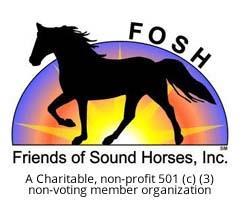
Friends of Sound Horses, Inc. Scholarship Request Form
Please print or type information below
Student Applying: _________________________________(name) Age: ____ (yrs)
Student Email:
Student Phone: _____________________________________________________
Student Address: ______________________________________________ (street)
____________________ (city) __________ (postal code) _____(state or province)
___________ (country)
School Name:
Major: _ ____________
Date of Last FOSH show participation *:
Attach copy of acceptance letter and note date on letter here:
School Address: ____________________________________ (street) _____ (city) __________ (postal code) _____(state or province)
___________ (country)
Note: Checks will be made out to [Institution Name] for the benefit of [Student Name] and will be sent to the attention of the Financial Aid department. If you are chosen to receive a scholarship, you will be notified within 90 days of applying
Please EMAIL this completed form to: president@fosh.info (faster) or mail to: FOSH 6614 Clayton Rd., #105 St. Louis, MO 63117
For FOSH use only… Amount provided: _____________ Date sent: ____________
Scholarship Guidelines are on the following page (and do not need to be submitted with this form).
Please consider adding FOSH to your list of worthy causes in making a taxfree charitable deduction or help us to promote legislation, education, and training that protects and helps gaited horses, simply by renewing your own membership or giving a gift membership to a kindred spirit.
We know you have many choices when it comes to giving. Thank you for considering FOSH.

FOSH Membership Application and Order Form
All annual memberships include a digital, bi-monthly issue of the Sound Advocate & educational packets. Mail to: FOSH 6614 Clayton Rd. #105, St. Louis, MO 63117
Type of Membership (check one)
Annual: Single ___$30 Annual Family ___$50 Annual Youth <18 ___$20 Lifetime__$600 Organization Membership (for your gaited horse club or association) ___ $50
Please print neatly.
Name: _______________________________________________________________________
Enclosed: $____________________
How did you hear about FOSH?
